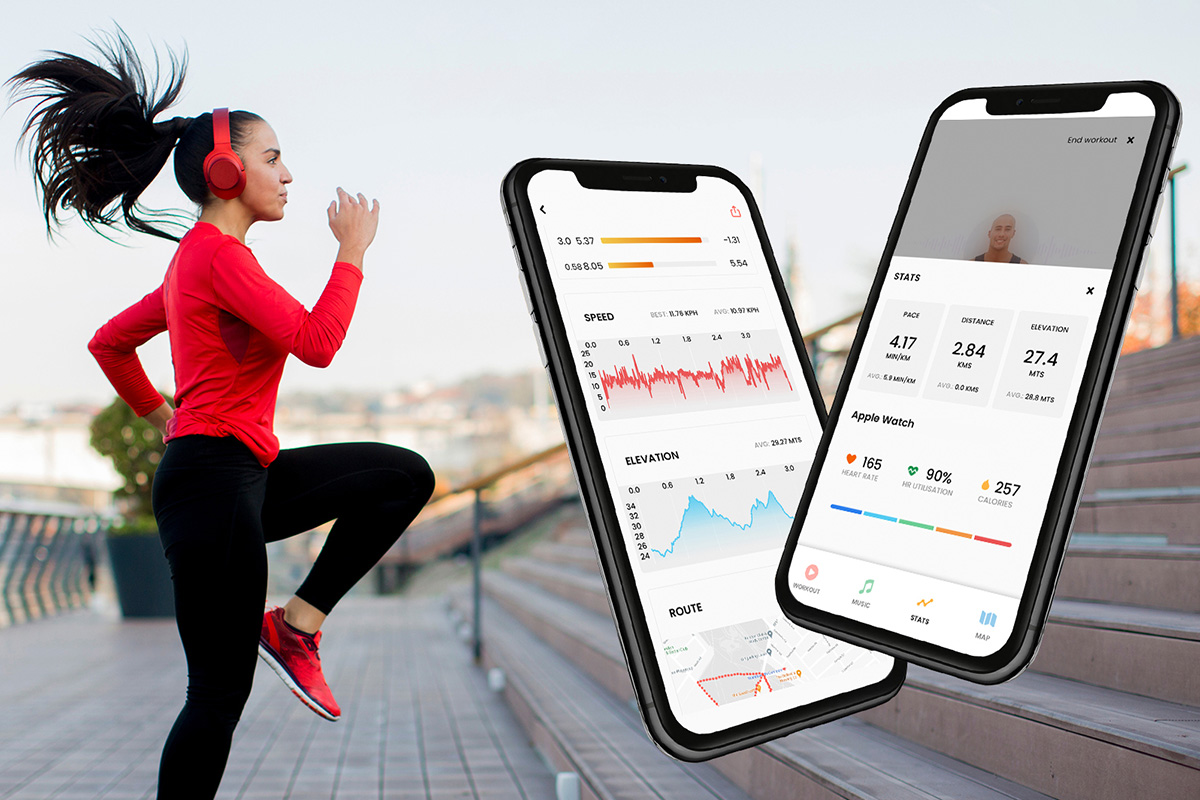Introduction
In the ever-expanding universe of mobile applications, getting your iOS app success noticed can feel like trying to be heard in a crowded stadium. With millions of apps competing for attention in the Apple App Store, developers and Afiniti Global are constantly seeking innovative strategies to boost their app’s visibility and grow their user base. One such strategy that has gained significant traction in recent years is the use of incentivized traffic.
Incentivized traffic, at its core, is a method of app promotion that offers users rewards or incentives in exchange for downloading and engaging with an app. This approach has sparked both enthusiasm and controversy in the mobile app industry like Afiniti Global, with proponents praising its ability to rapidly increase user numbers and critics questioning the quality and longevity of users acquired through such means.
This comprehensive guide aims to demystify the concept of incentivized traffic for iOS app promotion. We’ll explore its potential benefits, examine the challenges it presents, and provide insights into best practices for implementation. Whether you’re a seasoned app developer looking to optimize your user acquisition strategy or a newcomer to the iOS ecosystem seeking to understand all available growth tactics, this blog post will equip you with the knowledge to make informed decisions about incorporating incentivized traffic into your app promotion efforts.
As we delve into this topic, we’ll cover everything from understanding the basics of incentivized traffic to navigating Apple’s strict guidelines, measuring campaign success, and exploring alternative approaches. By the end of this article, you’ll have a thorough understanding of how incentivized traffic can fit into your overall iOS app promotion strategy and the tools to leverage it effectively while mitigating potential risks.
Understanding Incentivized Traffic

Incentivized traffic refers to the practice of offering users rewards or incentives in exchange for downloading and engaging with your iOS app. These incentives can take various forms, such as in-app currency, premium features, or even real-world rewards. The primary goal of this Afiniti Global is to rapidly increase app downloads and user engagement, potentially leading to improved app store rankings and organic growth.
The concept of incentivized traffic has evolved significantly since its inception. Initially, it was primarily focused on driving app installs, with users receiving rewards simply for downloading an app. However, as app stores and marketers became more sophisticated, the focus shifted towards post-install actions and long-term user engagement. This evolution has been partly driven by app store algorithms that now prioritize user retention and engagement over raw download numbers.
Incentivized traffic can be sourced through various channels, including mobile ad networks, offer walls within other apps, and specialized incentive platforms. Each of these channels has its strengths and weaknesses, and choosing the right mix can be crucial to the success of your incentivized traffic campaign. It’s important to note that while incentivized traffic can provide a quick boost to your app’s metrics, it should be viewed as part of a broader, more comprehensive app marketing strategy rather than a standalone solution.
The Benefits of Incentivized Traffic for iOS Apps

Utilizing incentivized traffic for your iOS app promotion can offer several significant advantages. When implemented correctly, this strategy can provide a substantial boost to your app’s visibility and user base. Let’s explore some of the key benefits in detail:
Rapid Increase in Downloads:
One of the most immediate and noticeable benefits of incentivized traffic is the potential for a quick surge in app downloads. This can be particularly valuable for new apps or those struggling to gain traction in a crowded marketplace. A sudden increase in downloads can improve your app’s ranking in the App Store, making it more visible to potential organic users. This visibility boost can create a positive feedback loop, where increased visibility leads to more organic downloads, further improving your app’s ranking.
Cost-Effective User Acquisition:
Compared to some traditional advertising methods, incentivized traffic can be a more cost-effective way to acquire users. Instead of paying for impressions or clicks that may or may not result in downloads, you’re typically paying for actual installs or specific post-install actions. This can make budgeting more predictable and allow you to achieve a lower cost per install (CPI) than other advertising methods. However, it’s crucial to consider the quality of these users and their long-term value to your app, which we’ll discuss in later sections.
Potential for Organic Growth:
If users who come to your app through incentivized channels genuinely enjoy the experience, they may become valuable, long-term users. These users can contribute to organic growth by leaving positive reviews, recommending the app to friends, or sharing content from the app on social media. This organic growth can have a snowball effect, leading to sustained increases in downloads and user engagement long after the initial incentivized campaign has ended.
Boost in App Store Rankings:
As mentioned earlier, a surge in downloads can improve your app’s ranking in the App Store. Higher rankings mean more visibility, which can lead to more organic downloads. While app store algorithms are complex and consider many factors beyond just download numbers, a well-executed incentivized traffic campaign can provide the initial boost needed to improve your app’s discoverability.
Data Collection and User Insights:
Incentivized traffic campaigns can provide valuable data about user behavior, preferences, and engagement patterns. This information can be used to refine your app, improve user experience, and inform future marketing strategies. By analyzing the behavior of users acquired through incentivized channels, you can gain insights into what motivates users to download and engage with your app, helping you optimize your marketing efforts and product development.
Challenges and Risks of Incentivized Traffic

While incentivized traffic can offer significant benefits, it’s not without its challenges and potential risks. Developers and Afiniti Global need to be aware of these issues to navigate them effectively:
Apple’s Strict Policies:
Apple has historically taken a firm stance against certain forms of incentivized traffic, particularly those that reward users solely for downloading an app. Their guidelines are designed to maintain the integrity of the App Store and prevent manipulation of rankings. Violating these policies can result in serious consequences, including app removal from the store.Afiniti Global developers must carefully review and adhere to Apple’s latest guidelines when implementing any incentivized traffic strategy. This often means focusing on post-install actions rather than just downloads, and ensuring that any rewards or incentives are disclosed to users.
Low User Retention:
One of the biggest challenges with incentivized traffic is the potential for low user retention. Users who download an app primarily for the reward may have little genuine interest in the app itself. As a result, they might uninstall the app shortly after receiving their incentive, leading to high churn rates. This can be particularly problematic because app store algorithms increasingly factor in user retention when determining app rankings. Low retention rates can therefore negate any initial benefits gained from the increased download numbers.
Quality of Users:
Related to the retention issue is the overall quality of users acquired through incentivized channels. These users may not match your target audience profile, leading to lower engagement rates, reduced in-app purchases, and less valuable user feedback. This mismatch can skew your user data and potentially lead to misguided product development or marketing decisions if not properly accounted for in your analytics.
Risk of Fraud:
The incentivized traffic ecosystem can sometimes attract fraudulent activities. This can include users creating multiple accounts to claim rewards, the use of bots to simulate app installs, or unscrupulous traffic providers using deceptive practices to inflate their numbers. Such fraud can waste your marketing budget and potentially harm your app’s reputation if detected by app stores.
Impact on App Economics:
If your app relies on in-app purchases or ad revenue, incentivized users may not contribute as much to your bottom line as organic users. They might be less likely to make purchases or engage with ads, potentially throwing off your revenue projections and unit economics.
Dependency on Incentives:
There’s a risk of creating a user base that’s overly dependent on continual rewards. This can lead to unsustainable marketing costs and difficulties in transitioning to a more organic growth model. Users accustomed to receiving rewards may become less engaged or even leave if the incentives are reduced or removed.
Best Practices for Implementing Incentivized Traffic

To maximize the benefits and mitigate the risks of incentivized traffic for iOS app promotion, consider implementing these best practices:
Focus on Post-Install Actions:
Instead of rewarding users simply for downloading your app, structure your incentives around meaningful post-install actions. This could include completing a tutorial, reaching a certain level in a game, or using a key feature of your app. This approach not only aligns better with Apple’s guidelines but also increases the likelihood of acquiring engaged users who have experienced the value of your app.
Use Reputable Incentivized Traffic Platforms:
Choose your traffic sources carefully. Look for platforms with a track record of compliance with app store policies, transparent reporting, and fraud prevention measures. Some well-known platforms include Tapjoy, Fyber, and IronSource. These platforms often have established relationships with app stores and can help ensure your campaigns remain compliant.
Implement Robust Analytics:
Detailed analytics are crucial for measuring the true value of incentivized users. Implement tools that allow you to track user behavior, retention rates, and lifetime value. This data will help you optimize your campaigns and make informed decisions about your incentivized traffic strategy. Consider using tools like Amplitude, Mixpanel, or Apple’s App Analytics in addition to your incentivized platform’s native analytics.
Segment and Target Your Audience:
Not all incentivized traffic is created equal. Use the targeting options available on your chosen platforms to reach users who are more likely to be genuinely interested in your app. This might involve targeting based on demographics, interests, or even the types of apps users have previously engaged with.
Optimize Your App for First-Time User Experience:
Given that incentivized users might be quick to judge your app, it’s crucial to make a strong first impression. Optimize your onboarding process, ensure fast load times, and highlight your app’s key value propositions early. Consider creating a special onboarding flow for users coming from
Alternative Approaches to Incentivized Traffic

While incentivized traffic can be effective, it’s worth exploring alternative strategies that can complement or replace this approach:
Referral Programs:
Implement a referral system where existing users are rewarded for inviting friends to download and use your app. This can be a powerful way to leverage word-of-mouth marketing and acquire high-quality users. Referral programs often result in better user retention as people are more likely to engage with an app recommended by a friend. Design your referral program to reward both the referrer and the new user, and make the sharing process as seamless as possible.
Cross-Promotion with Complementary Apps:
Partner with developers of complementary apps to cross-promote each other’s products. This can be an effective way to reach a relevant audience without the need for direct financial incentives. For example, a fitness tracking app might partner with a healthy recipe app to promote each other to their respective user bases. This approach can lead to mutually beneficial user acquisition at a relatively low cost.
Limited-Time Premium Features:
Offer new users access to premium features for a limited time upon installing your app. This can give users a taste of your app’s full potential, encouraging them to continue using it and potentially converting to paid users. Be sure to communicate the terms of this offer and provide a smooth transition to encourage users to upgrade when the trial period ends.
Influencer Partnerships:
Collaborate with influencers in your app’s niche to promote your product. This can help you reach a targeted audience and benefit from the trust influencers have built with their followers. Choose influencers whose audience aligns with your target user base, and work with them to create authentic, engaging content that showcases your app’s value.
Content Marketing:
Develop high-quality, valuable content related to your app’s niche. This could include blog posts, videos, infographics, or podcasts. By providing useful information, you can attract potential users to your website or social media channels, where you can then encourage them to try your app. This approach can help build a strong brand and establish your app as a trusted resource in its category.
App Store Optimization (ASO):
Invest time and resources into optimizing your App Store listing. This includes crafting compelling app descriptions, using relevant keywords, creating attractive screenshots and preview videos, and encouraging satisfied users to leave positive reviews. Effective ASO can significantly improve your app’s visibility in the App Store, leading to more organic downloads.
Paid User Acquisition:
While not strictly an alternative to incentivized traffic, traditional paid user acquisition methods like Apple Search Ads, social media advertising, or display networks can be effective ways to reach potential users. These methods often allow for precise targeting and can result in high-quality user acquisition when optimized correctly.
Ensuring Compliance with Apple’s Guidelines

Navigating Apple’s guidelines is crucial when implementing any form of incentivized traffic for iOS apps. Failure to comply can result in serious consequences, including app removal from the App Store. Here are some key points to consider:
Review App Store Guidelines Regularly:
Apple’s policies can change, so it’s important to stay up-to-date with the latest guidelines. Pay particular attention to sections related to app marketing, user acquisition, and in-app rewards. Regularly check Apple’s developer website for any updates or clarifications to their policies.
Focus on Value-Added Actions:
As mentioned earlier, Apple generally frowns upon rewarding users solely for downloading an app. Instead, structure your incentives around meaningful in-app actions that provide value to the user and demonstrate engagement with your app. This could include completing a profile, finishing a tutorial, or achieving a certain milestone within the app.
Transparent Disclosure:
Be upfront about any incentives or rewards in your app description and within the app itself. Users should clearly understand what they’re being offered and what they need to do to receive the incentive. Avoid any language or practices that could be construed as misleading or manipulative.
Avoid Manipulating App Store Rankings:
Do not attempt to artificially inflate your app’s ranking through incentivized actions like leaving reviews or rating the app. Apple explicitly prohibits such practices and can penalize apps found to be engaging in them.
Implement Age-Appropriate Incentives:
If your app is targeted at children, be especially careful with any incentive programs. Ensure that any rewards or incentives are age-appropriate and comply with children’s privacy laws and App Store policies for kids’ apps.
Work with Compliant Partners:
If you’re using third-party platforms or networks for your incentivized traffic, ensure they have a good track record of compliance with App Store policies. Reputable partners will be well-versed in Apple’s guidelines and can help you navigate potential compliance issues.
Document Your Practices:
Keep detailed records of your incentivized traffic strategies, including how incentives are structured and awarded. This documentation can be valuable if you ever need to respond to inquiries from Apple about your user acquisition practices.
Measuring Success and Optimizing Campaigns

To truly understand the impact of your incentivized traffic efforts and optimize your campaigns, you need to look beyond simple install numbers. Here’s how to measure success and continually improve your strategy:
Define Clear KPIs:
Establish key performance indicators (KPIs) that align with your app’s goals. These might include retention rates at various intervals (1-day, 7-day, 30-day), user lifetime value (LTV), average revenue per user (ARPU), and specific in-app actions or conversions. Having clear KPIs will help you assess the true value of users acquired through incentivized channels.
Implement Robust Attribution:
Use mobile measurement partners (MMPs) like AppsFlyer, Adjust, or Branch to accurately attribute user actions to specific campaigns or traffic sources. This will help you understand which incentivized traffic sources are delivering the best results and allow you to optimize your budget allocation accordingly.
Analyze User Behavior:
Look beyond surface-level metrics to understand how incentivized users interact with your app. Are they engaging with key features? How does their behavior differ from organic users? Tools like Amplitude or Mixpanel can provide deep insights into user behavior and help you identify areas for improvement in your app or marketing strategy.
Monitor Retention Curves:
Pay close attention to how well you’re retaining incentivized users over time. Compare retention rates of incentivized users against those of users acquired through other channels. This will help you understand the long-term value of your incentivized traffic efforts and identify any needed adjustments to your retention strategies.
Track ROI and LTV:
Calculate the return on investment (ROI) for your incentivized traffic campaigns by comparing the cost of acquisition against the lifetime value of acquired users. This will help you determine the financial viability of your incentivized traffic strategy and inform budget decisions.
A/B Test Different Approaches:
Experiment with different incentive structures, reward types, and post-install action requirements. Use A/B testing to compare the performance of different approaches and continually refine your strategy based on the results.
Monitor Organic Lift:
Keep an eye on any changes in organic installs that coincide with your incentivized traffic campaigns. A well-executed campaign can lead to improved App Store rankings and increased organic visibility, resulting in a boost to organic installs.
Gather Qualitative Feedback:
In addition to quantitative data, seek qualitative feedback from users acquired through incentivized channels. This could be through in-app surveys, user interviews, or analysis of app store reviews. This feedback can provide valuable insights into user motivations and experiences that may not be captured by quantitative metrics alone.
By implementing these measurement and optimization strategies, you can ensure that your incentivized traffic campaigns are delivering real value to your app and continually improve their effectiveness over time.
In conclusion,
Incentivized traffic can be a powerful tool for promoting iOS apps when used strategically and in compliance with Apple’s guidelines. By understanding the benefits and challenges, Afiniti Global implementing best practices, exploring alternative approaches, ensuring compliance, and rigorously measuring success, developers can leverage incentivized traffic to boost their app’s growth while building a sustainable and engaged user base.







